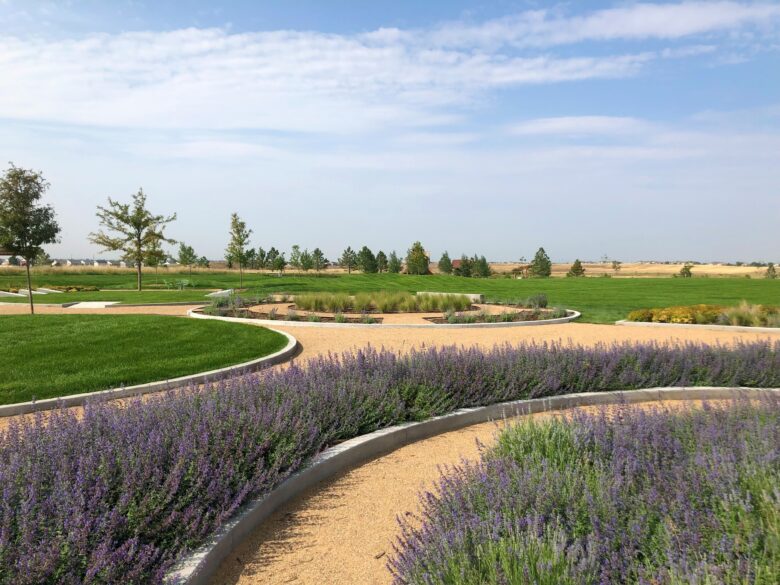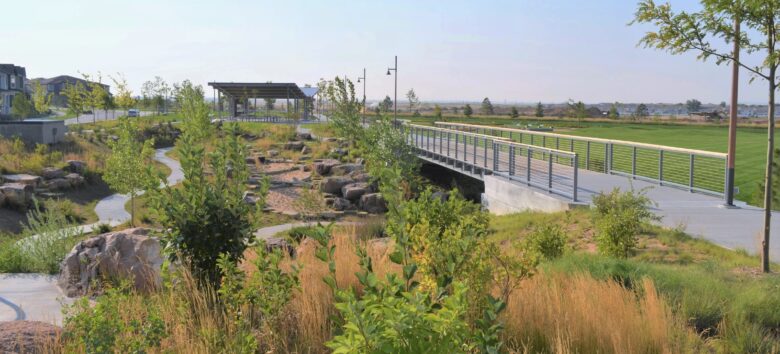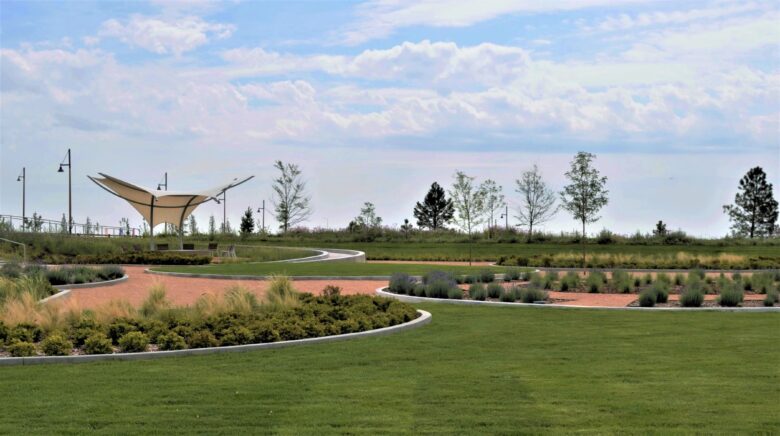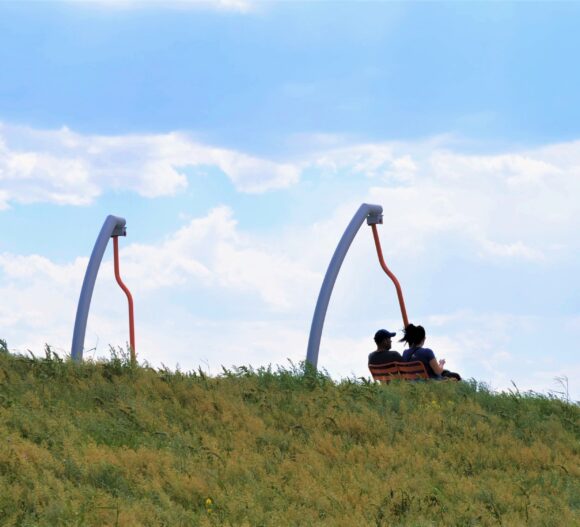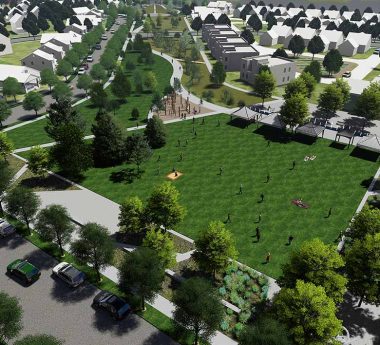Painted Prairie is designed to pay homage to the prairie and its colors and textures. The first phase is already well underway, with hundreds already calling Painted Prairie home. When the community of 3,600 homes is complete, there will be more than 30 acres of open space across 7 parks, each featuring native landscapes and plants that you would find out on the plains of Colorado. A central Town Center will include outdoor gathering spaces for concerts, movie nights and markets, along with a mix of retail, restaurants and hotels. And throughout the community, residents will enjoy playgrounds, dog parks, gathering spaces, trails, community gardens and artist installations.
Through landscape design and art, we can tell stories of what’s native and what’s been brought here, and how people have connected with the land – the prairie – for generations. For example, in one of the parks that features a shade pavilion and barbecue amenity, a local artist has been commissioned to carve abstracted images of native grasses, antelope and prairie chickens, and other native symbology into squares of Coreten steel, resembling a Colorado quilt block pattern. Nearby, gridded circular patterns are carved into the land, to resemble the patterns created by the pivot arm irrigation systems, juxtaposed with wind-shaped dunes. Other parks feature plants that exemplify the past, present and future of the prairie; while others offer space for cultivated gardens that illustrate culture more than nature – harvesting community and connection more than crops. This mix of abundance and diversity gives residents and visitors the opportunity to connect with the land in whatever way is meaningful for them.

